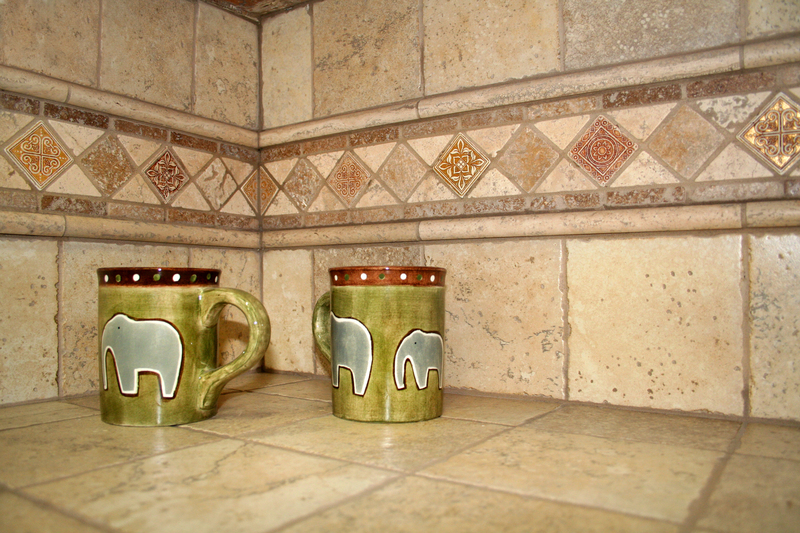Get Sparkling Results: Cleaning Burnt-on Residue from Your Stovetop
Posted on 27/05/2025
Get Sparkling Results: Cleaning Burnt-on Residue from Your Stovetop
If you enjoy cooking at home, you know that stovetop spills are almost unavoidable. Over time, those minor mishaps can leave you with burnt-on residue that seems nearly impossible to scrub away. But don't worry! With the right approach and a few helpful tips, cleaning burnt-on residue from your stovetop can become a manageable, almost effortless task. In this comprehensive guide, you'll learn multiple stovetop cleaning methods and discover how to restore your cooktop's shine with ease.
Why Burnt-on Residue is Difficult to Remove
Burnt-on food and greasy residues form a tough layer over time, often made worse by repeated heating and cooling cycles. This layer adheres tightly to your stovetop surfaces--whether it's glass, ceramic, or stainless steel--and regular cleaning products sometimes just don't cut it. That's why using the proper techniques and solutions is essential for getting those sparkling results on your stovetop.
Common Causes of Stubborn Stovetop Messes
- Spilled sauces, soups, or oils that are left uncleaned and get "baked on."
- Overboiling pans which allow starchy liquids to settle and harden.
- Daily frying or sauteing that leaves a film of grease, gradually layering up.
- Unattended food spills that char and carbonize on high heat.
No matter the cause, the solution lies in using the right stovetop cleaning methods tailored to the type and extent of the burn.

What Supplies You'll Need
To achieve sparkling results when cleaning burnt-on residue from your stovetop, gathering the right cleaning supplies is crucial. Here's a handy checklist:
- Baking soda
- White vinegar
- Non-abrasive scrubbing pads or microfiber cloths
- Plastic or silicone spatula (to avoid scratching)
- Dish soap
- Warm water
- Commercial stovetop cleaner (for tough jobs)
- Old toothbrush
- Gloves (for sensitive skin)
It's important to avoid using abrasive steel wool or harsh chemicals, especially on glass or ceramic stovetops, as these can cause scratches or damage.
Step-by-Step Guide: Cleaning Burnt-on Residue from Your Stovetop
1. Let Your Stovetop Cool Completely
Before you begin any cleaning process, ensure your stovetop is completely cool. Cleaning a hot surface can be dangerous and less effective. Plus, some cleaning solutions may release fumes if heated.
2. Remove Loose Debris
Use a damp cloth or paper towel to wipe away loose crumbs and food particles. This prevents scratching the surface during the deep cleaning process.
3. Apply a Baking Soda Paste
For particularly tough burnt-on stains, spray white vinegar over the baking soda paste. The fizzing reaction helps lift the residue--a great science trick that's gentle on your stovetop!
Using a non-abrasive scrubbing pad or a microfiber cloth, gently scrub the area. Do not use steel wool or other abrasive tools, especially on glass or ceramic cooktops, as they may scratch the surface. For edges and crevices, an old toothbrush works wonders.
If some residue remains after scrubbing, carefully use a plastic or silicone spatula to scrape it off. Never use metal utensils; they can damage the stovetop's finish.
Once the stains are gone, wipe the entire area with a clean, damp cloth to remove any remaining paste or cleaner. Finish off with a dry cloth for a streak-free, sparkling shine.
Not all cooktops are made the same. The cleaning approach can vary depending on whether you have a gas, electric, glass, or ceramic stovetop. Here's how to clean burnt-on residue from every stovetop type:
Sometimes, you'll catch spills before they get really stubborn. For minor stains and light burnt-on food:
Consistent stovetop cleaning is key to preventing tough burnt-on residue from forming in the first place. Regular daily or weekly wipe-downs make deep cleans less daunting. Here's how to keep up the sparkle:
Prevention is your stovetop's best friend. Follow these handy hints for keeping your cooktop consistently spotless:
The simplest method involves applying a baking soda paste and letting it sit, then spraying with white vinegar, and finally scrubbing gently with a non-abrasive pad. This safe and effective combination tackles most messes without scratching.
It's best to avoid harsh chemical cleaners like bleach or ammonia, especially on glass, ceramic, or stainless steel cooktops. These chemicals may damage the surface or leave harmful residues. Stick to safer alternatives like baking soda and vinegar.
If you don't completely remove old, hardened food, or if you don't wipe up new spills quickly, residue can build up in layers. Regular cleaning and prompt attention to spills are your best defenses.
Cleaning burnt-on residue from your stovetop doesn't have to be a dreaded chore. With simple supplies and proven techniques, you can achieve a spotless, sparkling kitchen surface while extending the life and beauty of your appliance. Make stovetop maintenance a regular part of your cleaning routine, and you'll spend less time scrubbing--and more time enjoying your culinary creations.
Ready to get started? Grab your supplies and let your stovetop shine like new!
4. Add White Vinegar for Extra Power
5. Scrub Gently but Thoroughly
6. Use a Plastic Spatula for Stubborn Spots
7. Wipe Clean and Rinse
Specialized Techniques for Different Stovetop Types
Glass or Ceramic Stovetops
Gas Stovetops
Electric Coil Stovetops
Quick Fixes for Light Burnt-on Residue
Why Routine Maintenance Matters
Bonus Tips: Avoiding Burnt-on Food in the Future

Frequently Asked Questions about Cleaning Your Stovetop
What is the easiest way to remove burnt-on residue from a glass stovetop?
Can I use bleach or ammonia on my stovetop?
Why does burnt-on food keep coming back?
Conclusion: Enjoy a Sparkling Clean Stovetop





